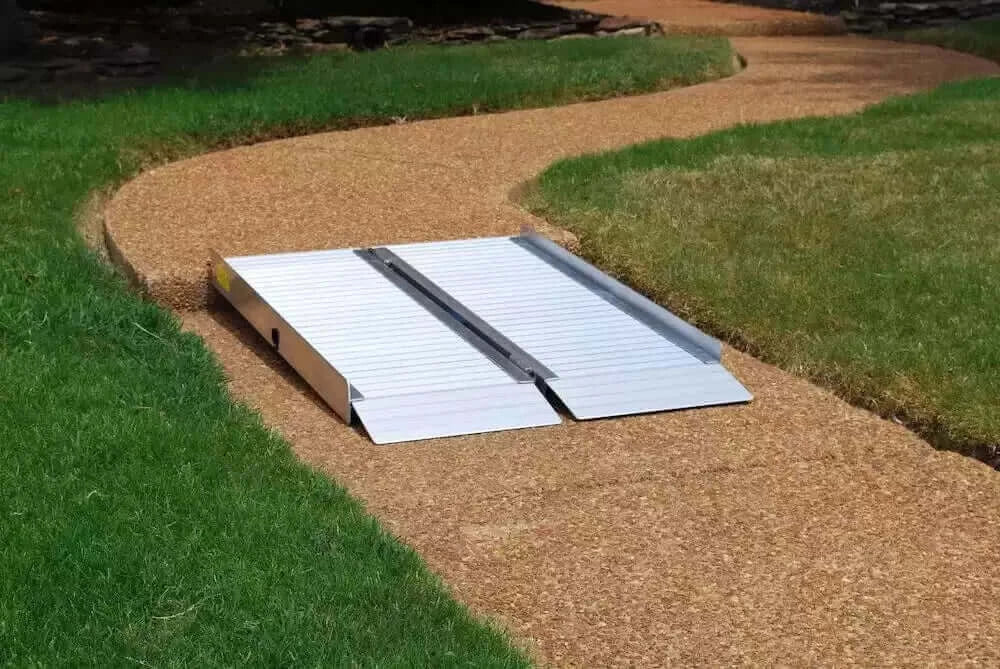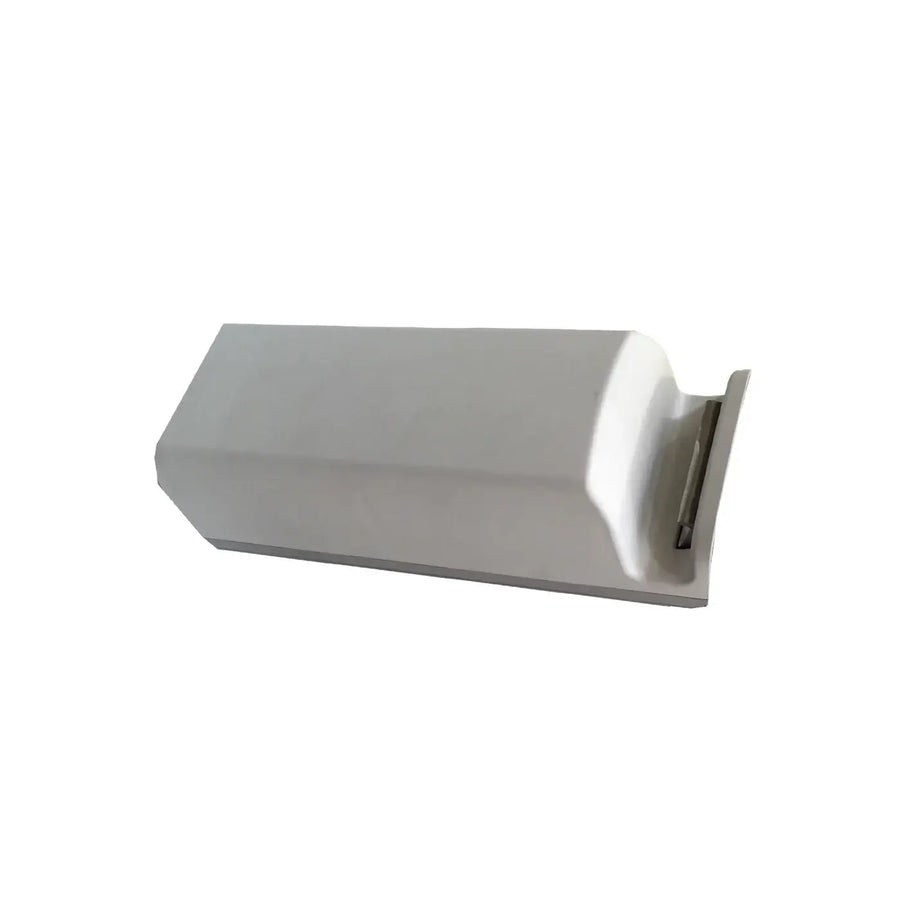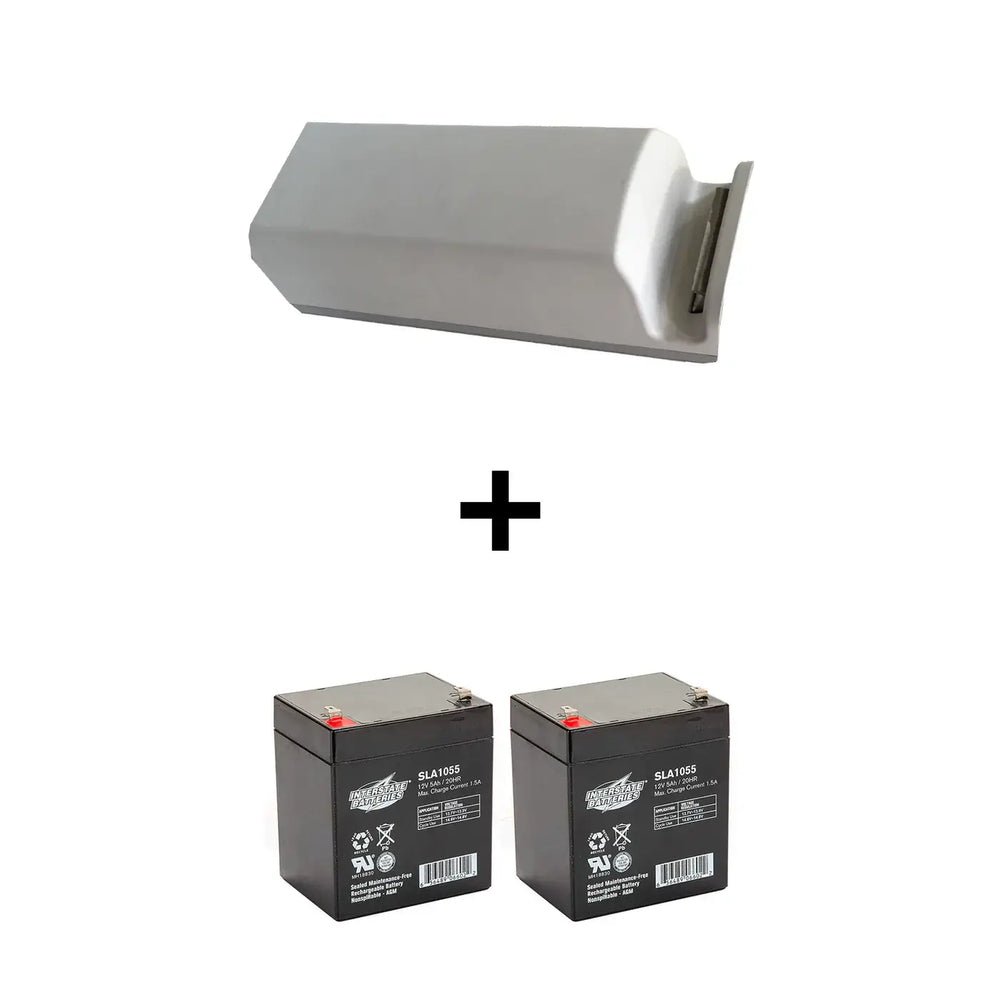Determine the Ideal Ramp Length for Your Requirement
Choosing the right ramp can feel overwhelming, but Reliable Ramps' Ramp Length Calculator makes it simple. Just enter your rise, and the tool will calculate the ideal ramp length for your desired incline. This can be applied to threshold ramps, modular ramps, wheelchair ramps, loading ramps, portable ramps and is your tool for the ADA Ramp Slope Calculator. If you ever have any questions, please don't hesitate to contact our Reliable Team, and we'd be happy to help!

Ramp Length Calculator
| Slope Explanations | Ratio | Recommended Ramp Length (feet) |
|---|---|---|
| The 1:12 Ratio has a 4.8° Slope and is the ADA Standard, Americans with Disabilities Act Compliance. Click here to learn more. | 1:12 | 0.5 Feet |
| The 1:8 ratio has a 7° Slope and is appropriate for manual wheelchairs assisted or unassisted. | 1:8 | 0.5 Feet |
| The 1:6 ratio has a 10° Slope and is appropriate for assisted manual wheelchairs or power wheelchairs. | 1:6 | 0.5 Feet |
| The 1:4 ratio has a 12° Slope and is recommended to be the max slope for strong assistance with manual chairs. | 1:4 | 0.5 Feet |
| The 1:3 ratio has a 15° Slope and is applicable for when users are NOT in a wheelchair. | 1:3 | 0.5 Feet |
Frequently Asked Questions (FAQs) about Determining Your Wheelchair Ramp Length
How do I determine the right wheelchair ramp length?
The length depends on the rise (height) you need to overcome and the incline (slope) you require. Use a ramp length calculator by entering the rise and preferred slope (e.g., 1:12 for ADA compliance).
What is the ADA recommended slope for wheelchair ramps?
The Americans with Disabilities Act (ADA) recommends a 1:12 slope, meaning 1 inch of rise requires 12 inches (1 foot) of ramp length.
What is the steepest slope for a wheelchair ramp?
The 1:3 ratio has a 15° Slope and is applicable for when users are NOT in a wheelchair. This is the steepest slope that we address on our Ramp Calculator Table.
What is the minimum length for a wheelchair ramp?
There is no absolute minimum, but the ramp should be long enough to create a safe incline based on the rise and user needs. The shortest practical length depends on the mobility device and physical ability.
Can a wheelchair ramp be too long?
Technically no, but longer ramps require landings for rest. ADA guidelines require a landing every 30 feet for ramps with a 1:12 slope.
What happens if a wheelchair ramp is too short?
A short ramp creates a steep incline, making it difficult to navigate, especially for manual wheelchairs. Steep ramps can be dangerous, causing falls or making it impossible for users to go up.
What is the ideal width of a wheelchair ramp?
ADA standards require a minimum of 36 inches of clear width between handrails.
How do I make sure my ramp is safe?
Ensure a proper incline, non-slip surface, secure edges, and handrails for longer ramps (typically over 6 feet). Following ADA guidelines increases safety.
Can I build a wheelchair ramp myself?
Yes, but it must be structurally sound, follow incline recommendations, and include safety features like handrails for certain lengths.
How much weight can a wheelchair ramp hold?
It depends on the material. Aluminum ramps typically hold 600-800 lbs, while modular steel and wood ramps can be designed for higher capacities.
What type of ramp is best for outdoor use?
Aluminum ramps are best for outdoor use due to their durability and weather resistance. Wood can rot over time, and steel can rust if not properly treated.
Can a wheelchair ramp have a turn?
Yes, modular ramps often include landings with turns (90° or 180° or sometimes angled turns) to fit within space limitations while maintaining accessibility.
What is the best ramp length for a van?
For vehicle access, 1:6 or 1:4 slopes are often used. If a van has a 20-inch rise, a 6-10 foot ramp is recommended, depending on user capability.
What’s the best ramp for power wheelchairs and scooters?
Longer ramps with a gentler incline (1:12) are best, as power wheelchairs and scooters can struggle with steep angles.
Do I need a permit to install a wheelchair ramp?
For permanent ramps, many cities require a permit, especially if it alters access to public areas or sidewalks. Check local building codes.
What is the best ramp material: aluminum, wood, or steel?
Aluminum: Lightweight, weather-resistant, low maintenance. Wood: Customizable but requires maintenance (sealing/staining). Steel: Strong, but may rust without proper treatment. Aluminum is typically the best choice for modular and portable ramps due to its durability.
How do I know if a ramp is the right fit for me?
The best ramp for you depends on several factors: your mobility needs, the type of wheelchair or scooter you use, whether you have assistance, and the available space. Consider the incline, weight capacity, and surface texture before choosing a ramp.
What happens if a ramp is too steep?
A steep ramp can make it difficult or even dangerous to use, especially for manual wheelchair users. It can cause tipping, slipping, or the need for excessive effort to go up. Steeper ramps also increase the risk of injuries when descending.
How do I choose between a portable and a permanent ramp?
Portable ramps are great for temporary use, travel, or locations where a ramp isn’t needed all the time. Permanent ramps are best for homes and businesses with regular accessibility needs. If you plan to use a ramp daily, a modular or fixed ramp is often a better choice.
What features should I look for in a safe ramp?
A good wheelchair ramp should have: A non-slip surface for traction in all weather conditions Side rails or raised edges to prevent rolling off A gradual incline for easier navigation A strong, durable material that supports the necessary weight Handrails if the ramp is long or steep
How do I make sure my ramp works for all seasons?
For outdoor ramps, choose weather-resistant materials like aluminum or coated steel. A non-slip surface is critical for safety in rain, snow, or ice. In winter, keeping the ramp clear of snow and ice buildup is essential.
Can one ramp work for multiple locations?
Portable ramps can be used in different places, but their effectiveness depends on the rise at each location. If you need a ramp for different heights, an adjustable or telescoping ramp might be a better option.
Do ramps require maintenance?
Yes, like any structure, ramps require maintenance. Aluminum ramps typically need the least maintenance—just occasional cleaning. Wood ramps may need sealing, painting, or repairs over time, while steel ramps should be checked for rust.
How do I know if I need handrails on my ramp?
Handrails are recommended for longer ramps, especially those with a steeper incline. They provide extra stability for users walking up the ramp or for caregivers assisting someone in a wheelchair. ADA guidelines require handrails on ramps that rise more than 6 inches.
How do I make sure a ramp works for both wheelchairs and walkers?
If a ramp will be used by both wheelchair users and those with walkers, it should have a gentle incline, a slip-resistant surface, and a stable, even surface. Handrails are especially useful for walker users who need extra support.









